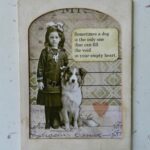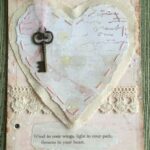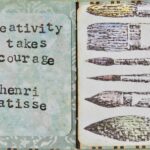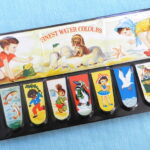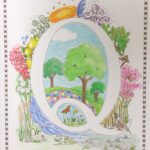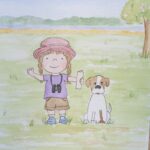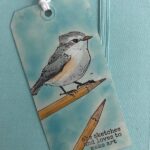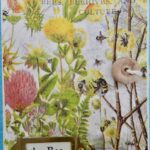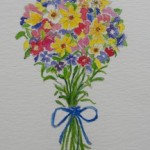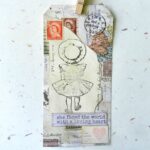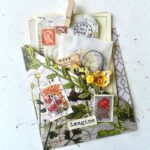Nature, Writing, and the Friends Literary Society of Waterford, Virginia
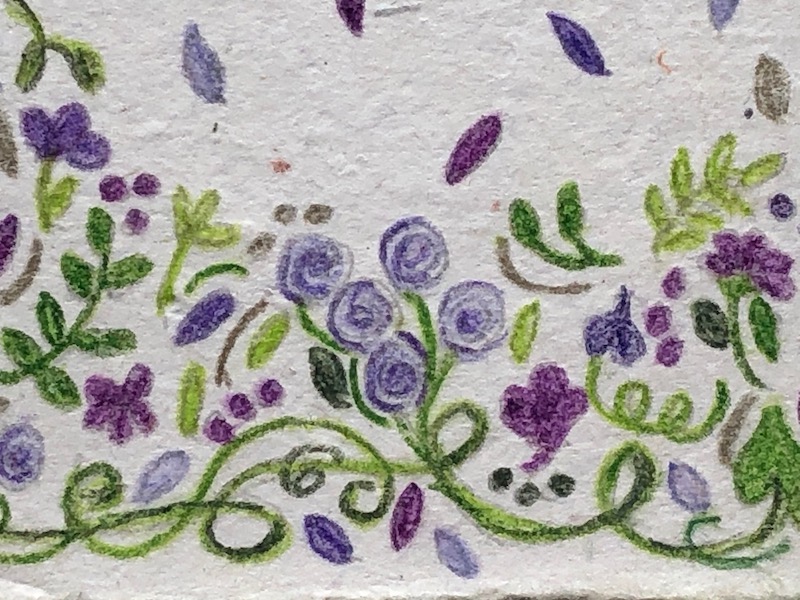
Amos and Mary Janney, Quakers from Bucks County, Pennsylvania , moved south to the Catoctin Valley of Virginia about 1733. The community grew as more Quakers followed the Janneys to build mills, plant farmlands, and build houses and shops. The area, then part of Fairfax County, would eventually become the vibrant village of Waterford in Loudoun County.
Literature played an important role in Waterford very early on, with the founding of the Franklin Library sometime in the 1820’s. It is not known just how long the subscription library remained in operation, but one of its books, Early Impressions, shows a printing date of 1844.
At some point in the village’s history, the Waterford Literary Society formed. One original volume, held in the Thomas Balch Library in Leesburg, has the years 1857, 1858, 1859, 1860 embossed in gold on the cover. The many poems and essays in the book include this one on the group’s beginning:
The Organization
In a little village lately
Met some gentlemen and ladies
Now should persons chance to ask me
Why this meeting why this gathering
I should answer. I should tell them
For this purpose they assembled
Twas to organize a meeting
Or a little Reading Circle
They think it will prove beneficial
Unto their minds and also reading
Or at least that’s what they wish for
If attention there be paid to it
Then success will crown their wishes.
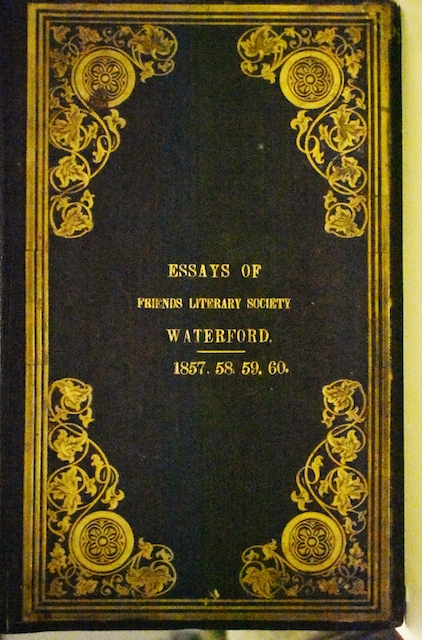
Reading, writing, and sharing seemed to be the focus of the ladies and gentlemen of the Literary Society.
Members’ thoughts and writings, recorded in bound green journals with gold gilding, covered a wide range of topics, from “What is a Smile” to “The Women’s Rights Convention”. A reader conjures up vivid images in the essay titled “Night”: “The glare, the bustle and turmoil of day have passed away and the quiet hours are at hand. Night has come again, folding within her sable curtains, all surrounding objects. The star of evening, sparkling attendant of the twilight, presented her cheering face like Hope in adversity, telling of coming brightness. She was but the harbinger of the numberless sweet tremblers which now gem the heavens. . .”
In these verses from the 1858-1859 session, one member answers the question that many writers have asked themselves:
What is There Left to Write About?
What is there left to write about,
In all this world of ours;
From the tall and leafy forest oak,
To the humblest of her flowers?
###
From the greater light that rules the day;
To the smalles star that shines,
From the diamonds of Golconda
To Mexicana’s mines?
###
What is there left to write about,
From the moons pale mellow light,
To the comet in his crackles course
With wondrous train so bright?
***
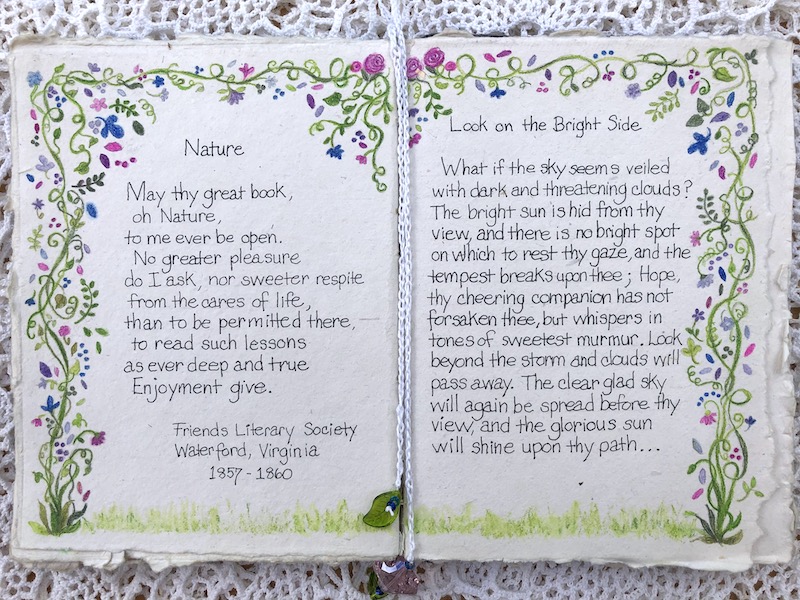
Society members often wrote about nature and the connection they felt to the natural world around them. As seen in the writing above, their words describe nature’s calming effect in beautiful detail. Words that resonate with us today.
Prose took on a different tone as the Civil War approached. Waterford was a mostly Quaker community and as such attempted to remain neutral. That was a challenging task as the village itself, voting 221-30 against secession, was surrounded by mostly Confederate sentiment. On January 16, 1861, member William Williams, who in 1863 would be taken hostage by Confederate troops, shared his thoughts on his home and the approaching war as the Society gathered for its final meeting before the war. Here is a portion of the poem, “Sweet Vale of Catoctin”:
Sweet vale of Cotoctin, how dear are thy hills,
Thy forests of verdure, thy streamlets, thy rills;
How noble and grand are thy mountains of blue,
So bold in their outline, so changing in hue!
####
The heat of the summer, to soften its glow,
As free, too, to linger, to come and to go.
How sad is the thought that these fields may be made
The prey of the spoiler, with war for his trade!
####
These valleys and hills may resound with the tread
Of armies that march o’er the dying and dead!
And slaughter and blood may crimson the plain
On which should be waving the rich golden grain.
Three Society members, sisters Lida and Lizzie Dutton, and their cousin, Sarah Steer, applied their writing skills to publish The Waterford News, a pro-Union newspaper meant to encourage soldiers and citizens (See my blogpost from April 1, 2019).
Thankfully, the words of these young journalists as well as many other Literary Society members survive and can be read and enjoyed today. These treasures represent a period in history, written by everyday people wanting to share their stories.
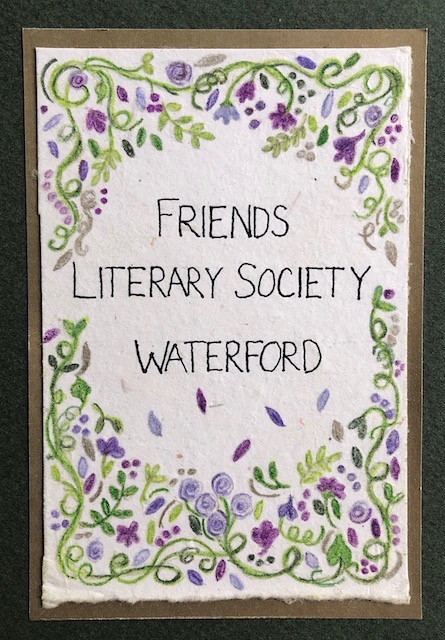
For this week’s art, I wanted to illustrated some of the words of the Friends Literary Society. I find nature inspiring in my art and writing, so connecting the three seems only natural. To create the floral borders for the poems, I used watercolor pencils (you know, my favorite!) on handmade paper bound in a velvet- covered journal. I love the look of the colors on the textured paper. As I enlarged the photos, I found that the images look a bit like embroidery.
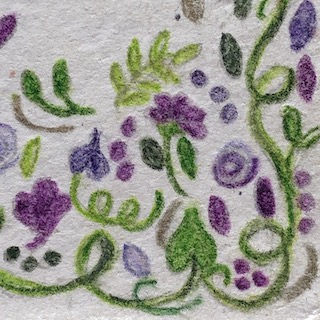
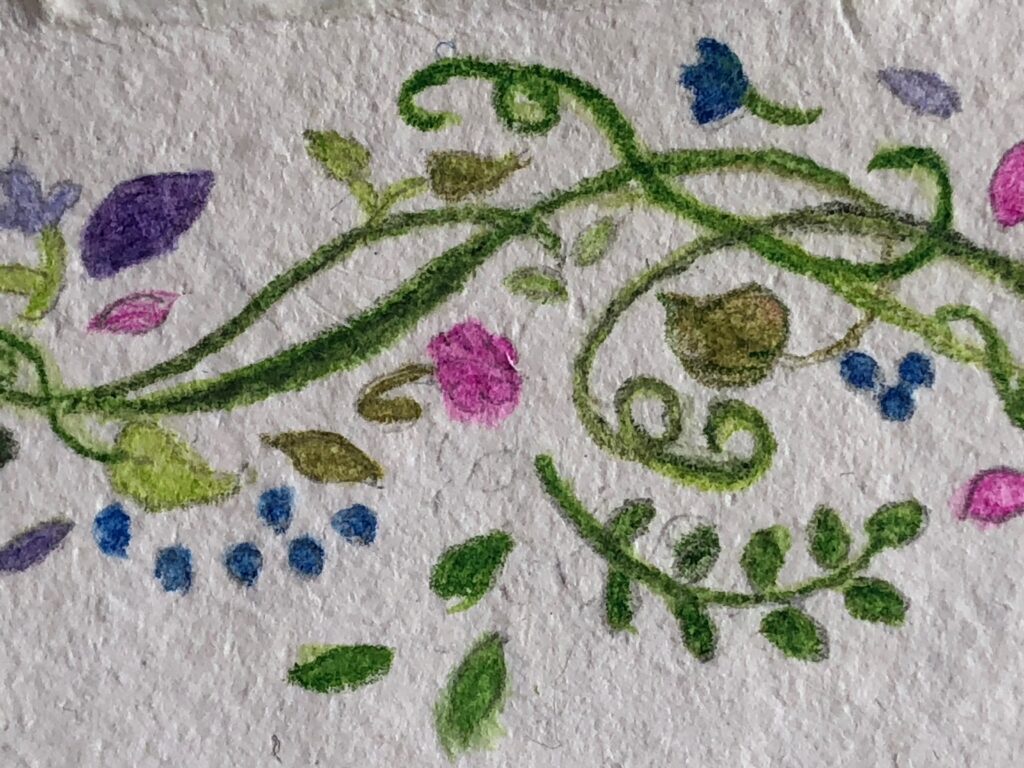
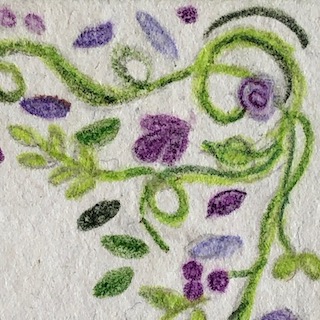
I hope that many of you are keeping some type of journal during this unusual time in our history. If you are overwhelmed with filling an entire page, just sum up your day in two or three words on the calendar space. Just another way to tell your story. And, this might just be a great time to try watercolor pencils! Take care everyone.
*Thank you to the Waterford Foundation, Inc., www.waterfordfoundation.org





